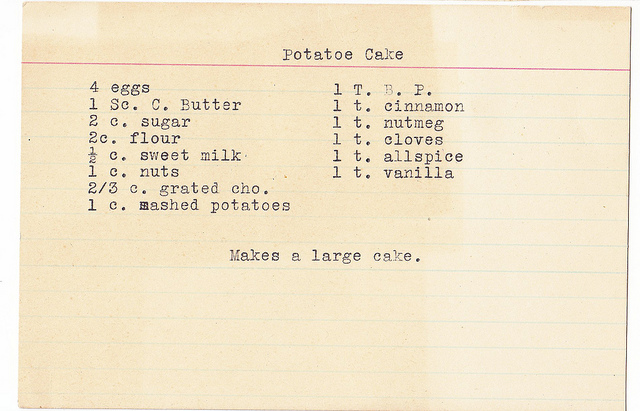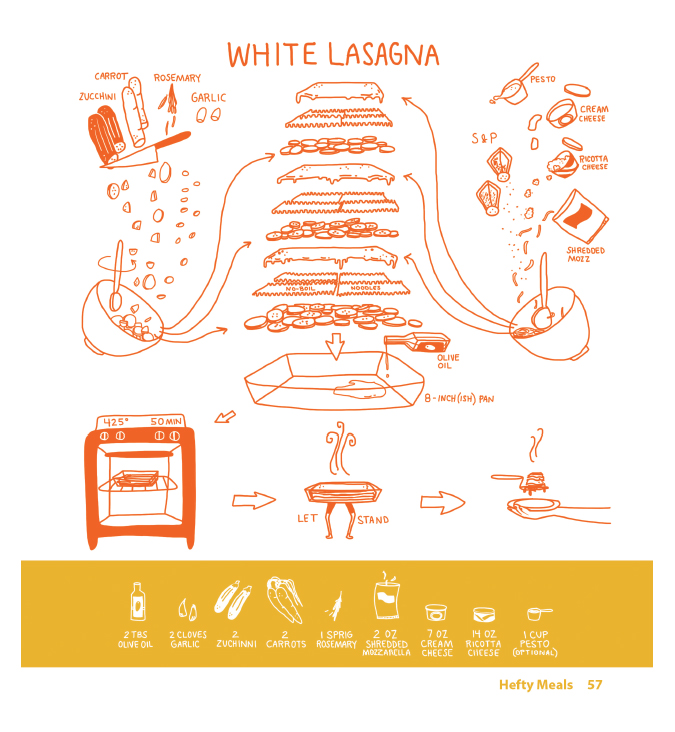UX IRL: The Problem with the Modern Recipe
For many of us at Nebo, it can be hard to leave our work at work. Intuitively, we apply the same human-centered approach we use for our clients to our everyday experiences. Realizing that it is futile to fight it, we’ve decided to embrace it. We’ve decided to look at everyday things and figure out ways that the user experience can be improved. This is a look at the user experience in real life, or as people online might put it, UX IRL.
Our first subject: recipes.
A Bittersweet Conundrum
Recipes hold a special place in our hearts. They contribute not only to our holiday celebrations, but also to our culture and our collective consciousness. They fill our bellies and our spirits, while connecting us with our past, present and future through a shared experience.
And, for many practitioners of the culinary arts, that shared experience is frustration.
During the holidays we dig up old family recipes or try new ones in hopes of impressing (or one-upping) someone at the many gatherings we’re invited to between Black Friday and Christmas Eve. However, the recipes we count on often let us down, either through confusing instruction, intricate prep work or just assuming too much from the user.
Though it seems like a list of ingredients and a few instructions should be simple enough to follow, they often, well, aren’t. A numbered list doesn’t reveal the full story behind a recipe or allow for human nature. It also assumes the competency of the writer of the recipe to provide proper instruction.
Recipes leave much to be desired when it comes to the user experience. Though we may not have the greatest culinary acumen, it’s not always our inability to follow simple instructions that’s at fault, but the recipe.
The Origin of the “Modern” Recipe
The recipe format most commonly used today is the product of two movements at the beginning of the 20th century. During this time, scientific progression, most likely due to the second industrial revolution, was influencing aspects of daily life. People began to mimic the level of precision and accuracy found in the scientific process. At the same time, the women’s magazine business was booming and eager to appeal to the common housewife. Magazines began printing recipes that imitated a scientific process on heavy 3x5 cards as an incentive for subscribing.
Women soon adopted the 3x5 index card format to write their own recipes. Most of the time, however, people wrote recipes with basic instructions, almost in a stream of consciousness manner. More or less, recipes were written with only one user in mind: the person writing it.
Recipes served more as a reminder to the cook on how to work their way through a process that would call on their past experience, not inform a new audience. They assumed a lot from the user, as it was written for a close friend or family member, someone who would naturally understand what they were talking about because of their shared knowledge and culture. This is how you get recipes that offer vague suggestions, such as, “cook until done” instead of providing a unit of measurement.
However, home cooking has steadily declined since the 1960s, with only 50% of households actually cooking. That means most people either don’t have any basic cooking knowledge, or are considerably rusty at the craft.
Further, the modern recipe format we know today is an adaptation of the communications popular in the early 20th century. We’re still clinging to the 3x5 card format, despite now having numerous ways to communicate how to create something.
Though there are best practices to writing a recipe, few people are actually going to research them or understand them naturally. Even recipes from celebrity chefs or recipe websites rarely follow best practice guidelines. People write things down in ways that make sense to them. Unfortunately, we often are not our own target audience.
How They Can Be Improved
Don’t get me wrong, a lot of recipes get things right. They list all the ingredients, suggest the difficulty of the recipe and make notations for prep. However, there are a few ways that recipes can be improved for greater clarity, providing the cook with a better user experience.
Highlight or put weight on important parts of the recipe
There are some aspects of a recipe that a user should pay special attention to, whether it’s a complicated process such as deglacer, or constantly stirring your risotto.
Link to directions on specialized prep and other ways to help your audience better understand techniques
Recipes online have the advantage of being able to link to pieces of information. This helps keep recipes shorter and less complicated, while providing novices with the information they may need.
Structure tasks in a way that make sense from both a time and organizational standpoint
The steps of a recipe are usually arranged by task or in a progressive sequence. However, this isn’t always the best plan of attack. Sometimes it’s better to arrange items by level of difficulty, prep, etc. For instance, many people don’t know that when baking, you should mix all your dry ingredients and wet ingredients separate from each other, and then combine. It makes sense from both a baking and chemistry perspective, but may not come to mind for someone looking at a numbered list.
When possible, use imagery
Imagery goes a long way in explaining the various steps of a recipe. Many food blogs utilize a format that’s a mix of text, imagery and storytelling, followed by the traditional recipe format. Designer / illustrator, Katie Shelly, has taken an infographic approach.
Write from the perspective of your audience
It can be difficult for masters of a craft to empathize with those who aren’t as experienced. It’s one of the reasons that star sport players often don’t make great coaches, and the basis of the phrase, “Those who can’t, teach.” However, if you’re going to write a recipe, you have to be able to put yourself in the shoes of someone who’s less inclined, or at least ask someone to help you go over the finer points for comprehension.
Setting The Table For Change
Shared through performance or old, grease-stained cards, recipes carry a strong tradition. As with most traditions, however, recipes often take on a life of their own. They are modified for different tastes, shared in a church cookbook or seen by millions across a television screen. As our audience evolves and changes, so must the way we speak to our audience.
We also can’t let nostalgia get in the way of progress. Though the popular adage is, if it’s ain’t broke, then don’t fix it, sometimes the flaws aren’t as obvious. Sometimes we’ve been programmed to a certain routine or accept things the way that we are. We often don’t even realize how much better something could be.



Comments
Add A CommentThe beginning of the recipe should include the time it takes from preparation to serving.